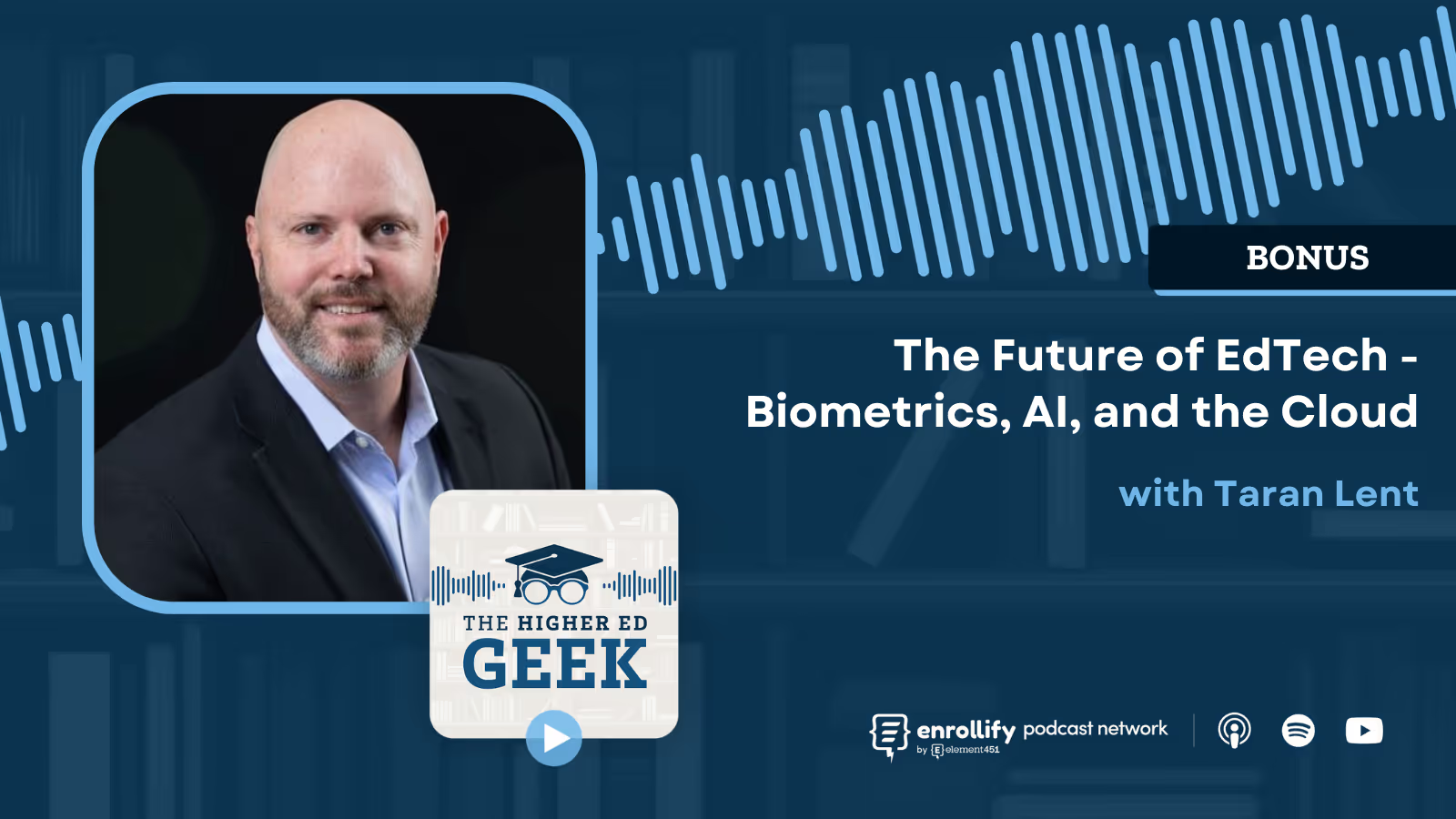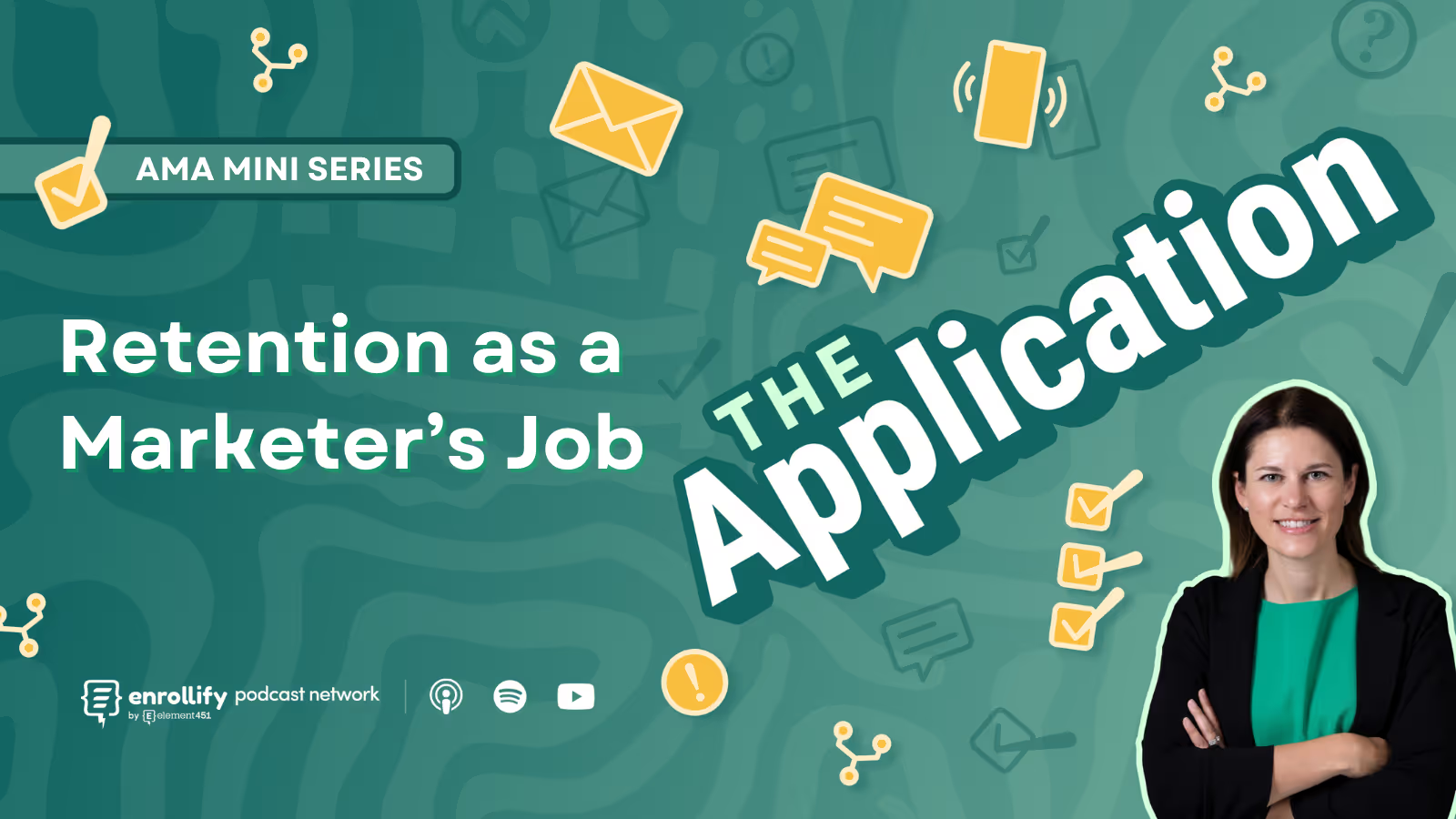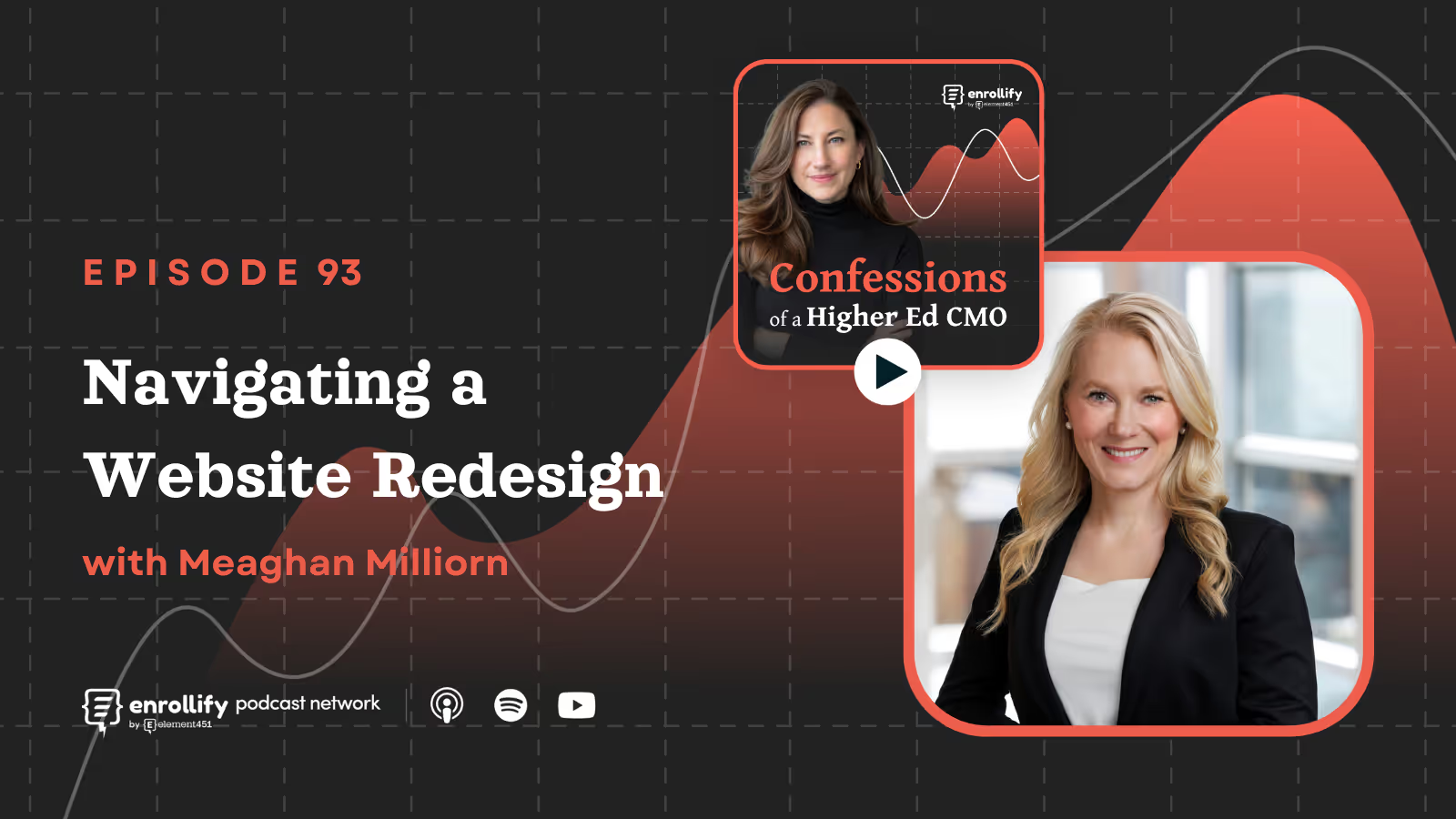About the Episode
Got a story to tell? An innovative idea to share? Fill out our guest nomination form and let's chat!
About the Episode:
In this special live episode from Transact 360, we sit down with Taran Lent, SVP of Product Development and Technology at Transact. Taran shares insights on how cloud migration is transforming campus operations, why user experience is more critical than ever, and the role of biometrics and AI in the future of higher ed tech. He also reflects on lessons learned as an entrepreneur and how institutions can adapt to rapid technological change while keeping students at the center.
Key Takeaways
- Cloud migration is a major transformation for institutions – Moving enterprise systems from on-premise to the cloud presents both opportunities and challenges, requiring institutions to rethink workflows and integration strategies.
- Change management is key – Shifting to cloud-based solutions isn’t just a technical upgrade; it requires cultural and operational adjustments for campus teams.
- User experience is more important than ever – Students expect seamless, mobile-first applications, driving institutions to focus on better design and accessibility.
- Agile development is replacing traditional models – Instead of annual software updates, cloud-based solutions allow for continuous, iterative improvements, making EdTech more responsive.
- Biometrics and AI are the next frontier – From facial recognition at airports to AI-driven staff training and automation, these technologies are poised to revolutionize campus operations.
The Challenges and Opportunities of Cloud Migration in Higher Ed
Cloud migration has been a recurring theme at Transact 360, and for good reason. Many institutions are transitioning from legacy, on-premise enterprise systems to cloud-based solutions, a shift that brings both exciting possibilities and logistical hurdles. Lent emphasizes that while cloud adoption offers improved security, scalability, and efficiency, it also requires a significant change in how institutions operate.
A major challenge is the reliance on outdated processes. Many institutions have spent decades developing custom solutions with direct database access—something that isn’t feasible in modern cloud environments. Instead, new technologies like APIs and event-driven architecture are becoming the norm, which requires training and adaptation. However, those willing to embrace process reengineering and change management will find that cloud migration opens doors to enhanced integration, automation, and security.
How EdTech Product Development is Evolving
Over the years, product development in higher education technology has transformed dramatically. Lent highlights that student expectations are driving institutions to focus more on user experience, particularly in mobile applications. Unlike a decade ago, when campus software was often designed with administrators in mind, today’s platforms must prioritize student usability, accessibility, and seamless digital interactions.
Additionally, cloud-based EdTech solutions enable a shift from the traditional “big release” model to continuous delivery. Instead of waiting for annual software updates, institutions can now receive ongoing enhancements, bug fixes, and feature rollouts. While this speeds up innovation, it also requires a mindset shift among administrators who may be used to long upgrade cycles. Features like feature flagging allow institutions to gradually introduce new capabilities without disrupting campus operations.
The Future of Biometrics, AI, and Higher Ed Technology
Looking ahead, Lent identifies three key trends that will shape higher education technology: biometrics, AI, and continued cloud adoption. Biometrics, already widely used in airports and retail, is making its way into education, with applications in payments, security, and student identification. Amazon’s palm recognition technology and Apple’s Face ID are early examples of how these innovations could enhance campus experiences.
AI is another game-changer, particularly for administrative efficiency. Lent suggests that institutions should start by identifying repetitive tasks they want to eliminate—whether it’s manual data entry or time-consuming customer support. AI-powered automation can free up staff to focus on more strategic work, making campus operations smoother and more effective.
Finally, cloud migration remains a long-term priority. While adoption is happening at different speeds across institutions, the shift to cloud-based solutions will continue to shape the future of higher ed technology.
About the Show: The Higher Ed Geek Podcast explores the impact of edtech on the student experience by speaking with diverse leaders from institutions, companies, and nonprofit organizations. Each week we aim to provide an engaging, fun, and relevant dose of professional development that honors the wide range of work happening all across the higher ed ecosystem. Come geek out with us! The Higher Ed Geek Podcast is hosted by Dustin Ramsdell and is a proud member of the Enrollify Podcast Network.
Connect With Our Host:
Dustin Ramsdell
About The Enrollify Podcast Network:
The Higher Ed Geek is a part of the Enrollify Podcast Network. If you like this podcast, chances are you’ll like other Enrollify shows too!
Some of our favorites include Generation AI and I Wanna Work There.
Enrollify is produced by Element451 — the next-generation AI student engagement platform helping institutions create meaningful and personalized interactions with students. Learn more at element451.com.
Attend the 2025 Engage Summit!
The Engage Summit is the premier conference for forward-thinking leaders and practitioners dedicated to exploring the transformative power of AI in education.
Explore the strategies and tools to step into the next generation of student engagement, supercharged by AI. You'll leave ready to deliver the most personalized digital engagement experience every step of the way.
👉🏻 Register now to secure your spot in Charlotte, NC, on June 24-25, 2025!















